We use technology in almost every aspect of our lives. It helps us accomplish tasks at work and home, stay up to date with current events and provides countless hours of entertainment.
From a business perspective, technology is helping across all industries as well. It aids in production, customer service, talent acquisition, security and much more but what impact is it having on the planet?
Some might argue outdated devices are contributing to the ever-growing pollution problem or that our data is at risk by using these technologies and while that may be true, several innovations are aiding in land and water sustainability.
According to FAO, the world population is expected to grow by over a third between 2009 and 2050. We are in the midst of this growth so we must continue to adopt more efficient and sustainable production methods while also adapting to climate change. Many farmers are utilising technology to help achieve those goals, reduce water consumption, improve operations and increase profits.
Author’s Note: Sonnet Malakaran George, Agro-Food Industries and Losses Expert from FAO (Food & Agriculture Organization) will be one of the keynote speakers sharing his valuable insights during the World Intelligent Farming Summit.
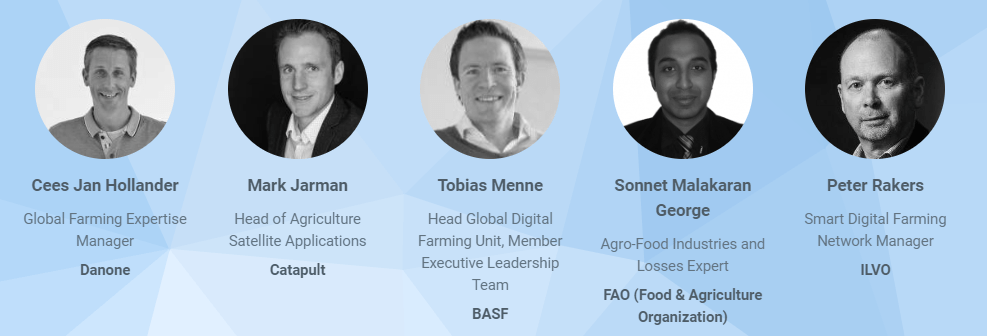
Here are a few of the tools & strategies helping farmers to achieve these goals and more:
Mobile Technology
The first tool we will look at is mobile technology since it has been around the longest. Tasks or data that farmers would traditionally use a pencil and paper for have been transferred to mobile devices and tablets.
Smartphone technology and applications have provided many benefits to farmers without costing them a lot of money. These software solutions provide real-time feedback and let you send out new work assignments to your team, all from the field.
One example of this is the Field Navigator app, a popular driving application for Precision Agriculture. It allows you to measure the size of your farm easily, even in poor conditions or low visibility.
It also has a steering assistance feature that helps with driving to parallel tracks, reducing your workload as well as the size of untreated areas and avoids overlapping. The app works for any size farm and is compatible with external GPS antennas for even further accuracy.
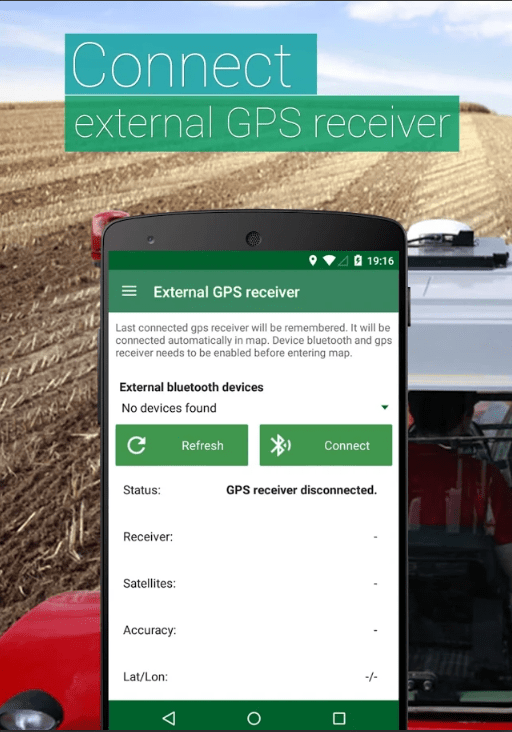
Image Source: Play Store
Big Data Analytics
Like many other industries, farmers can use big data to increase productivity and profitability. For farmers, big data can provide rainfall patterns, water cycles, fertilizer requirements and much more.
By having this information, farmers can make smarter decisions that will ultimately increase the farm’s yield. There is a lot of information to analyze with the data collected by mobile devices and wireless technologies but farmers need to be able to gather it all into one platform.
That is where our next tool comes in.
Farm Management Software
Farm management software can collect huge amounts of data and help farmers better manage it to make informed decisions at every stage of the production process. There are also other software options to help with machine operations and production.
Agrivi is one example of a farm management software that lets you plan, monitor and analyze all of your farming activities easily. You can also manage tillage, planting, spraying, fertilization, irrigation, harvesting and all other activities with a few clicks.
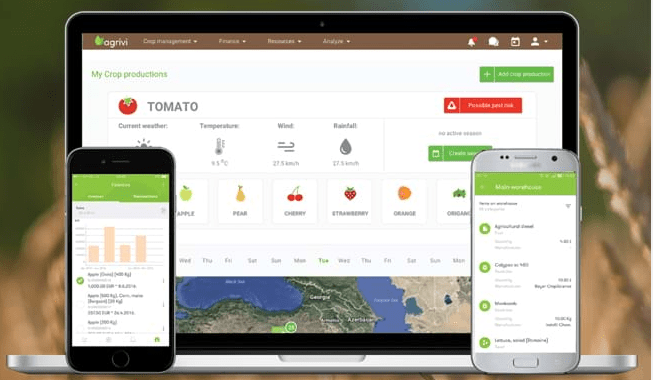
Image Source: Agrivi
Boost your performance with a farm management software by gathering and storing substantial information. Make timely and informed decisions based on accurate data.
Agriculture Drones
Agriculture drones are one of the latest innovations transforming the farming industry and its popularity is only increasing. The agriculture drone market is predicted to be worth $5.19 billion USD by 2025.
Drones help farmers in many of the same ways the other technologies mentioned do, with increasing crop yield, saving time, reducing expenses and providing data to enable accurate and precise decisions making.
Here are a few ways drones can be used for agriculture:
- Estimating Soil Conditions
- Planning Future Crops
- Fighting Infections & Pests
- Agriculture Spraying
- Crop Surveillance
- Livestock Monitoring
Many of these tasks required the farmer to be in the field, performing them manually before but now, through drone technology, farmers do not have to be in the field and these tasks are completed faster with more accuracy.
Even top brands are recognising the importance of drone use in agriculture. Recently John Deere collaborated with Volocopter to create a VoloDrone-based aerial crop-dusting system. The drone is mounted with a tank and sprayers to dispense pesticides, liquid fertilizer, anti-frost agents and more. Both companies see potential for sowing seeds for new crops in the air as well.
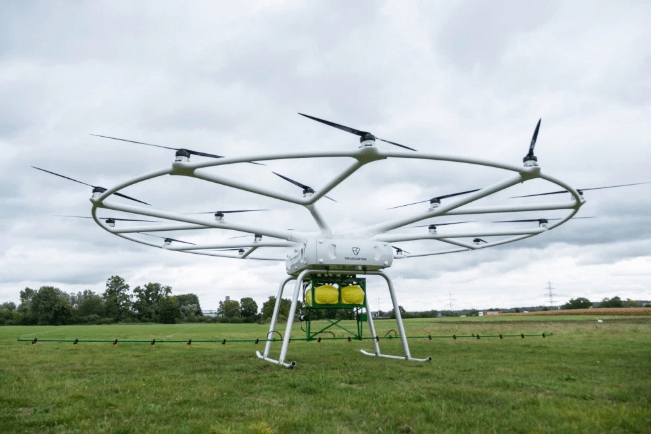
Image Source: TechCrunch
Sensors
Smart sensors are another innovation transforming the farming industry. They are aiding farmers by examining the ground conditions with exact accuracy and providing data to farmers in real-time.
Farmers are coupling sensors with drones to evaluate field conditions from the sky. These sensors can detect nuances all over the ground that the human eye might miss.
Sensors are even being built-in to cow collars to detect activity levels. The farmer then receives alerts on their smartphone when the behaviour of the cow changes. This technology helps dairy farmers monitor the health of their livestock and gives them valuable time back to spend with their families.
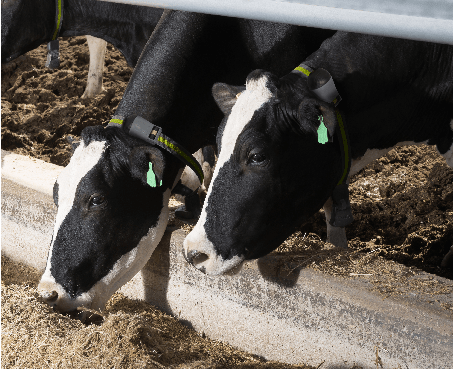
Image Source: SCR Dairy
Smart sensors are also being used to:
- Monitor weather conditions
- Measure the pH level in the fields
- Monitor the condition inside grain silos where seeds are being stored
- & more
Vertical Farming
Vertical farming is a trending topic that has only gained more attention over the past five years. The graph below shows the worldwide Google search interest for vertical farming over the past five years.
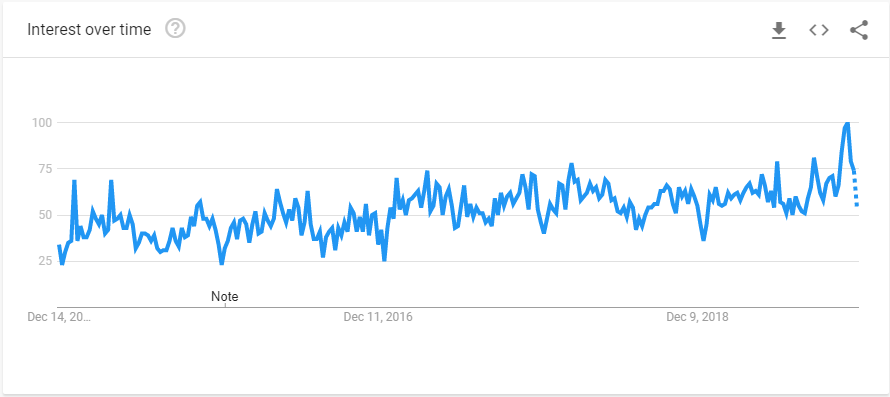
Image Source: Google Trends
Looking at this data, it’s no surprise farmers are investing in vertical farming tactics. Vertical farms offer a plan for future food demands in a world where arable lands are depleting.
Vertical farming allows crops to be grown year-round with no impact from the changing weather conditions. This is a considerable advantage for farmers struggling to deal with climate change. By farming indoors, you also use significantly less water and crops are less exposed to chemicals and disease.
All of these advantages have led to an increase in the production of organic crops. Even with all of these advantages, vertical farming technology is still fairly new so the impact it will have on the growing food demand will have to wait to be seen.
Final Thoughts
These are just a few of the technologies and ways they are influencing the future of farming. As we look toward the future and the growing food demand, farmers continue to seek better ways to produce crops by embracing innovation.
Experts are predicting some significant changes for the agritech sector, but no one knows for sure what agriculture will look like at the century’s midpoint.
Join us and industry experts to learn more about these technologies and trending topics in smart farming. Register today to save your seat for the World Intelligent Farming Summit in March.

